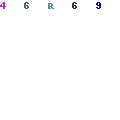River Bluff Review seeks creative writing and art

Cover art from the 2011 edition of the River Bluff Review. photo courtesy of SIUE's Department of English Language and Literature.
Art and creative writing students still have a chance to be a part of the 20th edition of the River Bluff Review (RBR), according to Valerie Vogrin, associate professor of English language and literature. The deadline for submissions for the RBR is this Friday, Feb. 6th.
Vogrin stated that submissions are requested from across the university and that the College of Arts and Sciences supports the printing of the journal.
“Anyone–undergraduate or graduate–who’s currently enrolled or was enrolled in the fall, is eligible to submit. We solicit black-and-white art work of all kinds, basically every kind of writing that is creative.”
The RBR is the work of students enrolled in English 494 – Literary Editing. According to Vogrin, the class was originally put together by Alison Funk, distinguished research professor of English language and literature. The class began as an extracurricular project and expanded into a full course. Vogrin stated that while she is the course professor and advisor students are entirely responsible for the publication.
“Students take responsibility from the first week,” said Vogrin.
Students are given a crash course in layout and design, as well as soliciting contributor’s notes once the final selections are made. Students also work to inform other students, faculty, and staff about the journal. Vogrin stated that students in the class will have a booth set up in Peck Hall on Monday from 10 a.m. to 12 p.m. and Tuesday in the Morris University Center (MUC) from 11 a.m. until 2 p.m. At the booth, anyone who is interested may speak with the students to find out more about the River Bluff Review.
“Part of their job is to get people aware of the journal because there are people who just don’t know,” said Vogrin.
Vogrin stated that she serves as an advisor and that her role is to make sure the students keep moving so that they are able to publish the edition. Vogrin also works to log the submissions so that students in the course can also submit work. This ensures that all submissions are judged equally.
“I also act as a glorified clerk, logging submissions,” said Vogrin. “It really gives them–many of the students in [the class] are creative writers themselves, creative writing minors–a look at what happens behind the scenes when they send off their submissions somewhere and all the reasons why it may be rejected or not.”
Last year, Vogrin was busy logging over 200 literary submissions and about 100 pieces of art. While there is no set theme for the RBR, Vogrin stated that sometimes the submissions themselves lead to a theme. Most years, the RBR is an eclectic mix of art and writing, according to Vogrin.
Because students must put the publication together in just 10 weeks to ensure it can be printed in time, there is little time for editing any submissions, though students do contact contributors with any glaring issues.
“Time doesn’t allow for substantive edits, which would be great if the course was longer and they could do that. They pretty much accept things as-is. They do a pretty strong job of proofreading and finding things that simply don’t make sense or a line that just doesn’t seem to belong. There is time for a brief correspondence with the author to make sure that they are not changing things just to conform to standards.”
Vogrin stated that all students are encouraged to submit works, not just creative writers and artists. While students of creative writing and art have an advantage of practice at their art, many final submissions are made by students from across many different disciplines.
“Because the students in the class tend to have gone through the academic course work, and they’ve developed a certain aesthetic–that I would say is generally a more sophisticated aesthetic because they’ve been reading contemporary work, they know what is being published in the world–I think they are looking for a level of polish and sophistication that they are seeing in their own reading,” said Vogrin.
Vogrin sees the publication as a critical tool for the students enrolled in the course as well as for many of the contributors. Students in the course get real-world experience in editing journals while the artistic creators have their works published.
“At the end of the semester, they have an object in their hands that they can be proud of that has their name on it. It’s also then, for the people who are published, it’s really exciting because for many of the people it’s the first time they have been published,” said Vogrin. “They see their name in print and it kind of validates them as writers and artists.”
Filed Under: English Language & Lit • General CAS Stories












